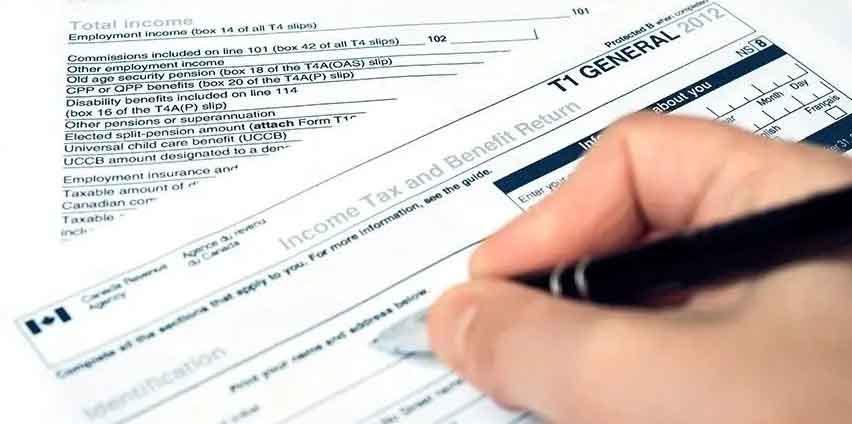Steps to Take After a CRA Notice of Assessment
Allan Madan, CPA, CA

Receiving a Notice of Assessment (NOA) from the Canada Revenue Agency (CRA) can be unsettling, but it’s important not to panic and to take the right steps to rectify the situation. In this blog, we’ll go over the steps to take if the CRA has indicated a discrepancy between your return and their assessment.
What Is The Notice of Assessment
The Notice of Assessment is a document that reflects the CRA’s review of your tax return and may indicate whether you owe additional taxes or are due for a refund. It summarizes the details of your tax return, including the income you reported, the deductions and credits claimed, and any tax you owe or refund you’re entitled to. The NOA is applicable to both personal and business tax returns.
The NOA also includes a comparison between the amounts you reported and the CRA’s calculations. If there are any discrepancies, the NOA will explain the adjustments made. It’s important to review your NOA carefully to ensure that all information is accurate and to understand any changes the CRA may have made to your return.
How The CRA Decides To Review a Return

The CRA does not publicly disclose the specific guidelines or criteria it uses to select tax returns for review. However, certain factors can increase the likelihood of your return being scrutinized. Large claims, such as significant medical expense credits or substantial donation tax credits, often draw attention.
Additionally, if your return includes large claimed expenses that result in a tax refund—such as home office or vehicle expenses for employees, or meals, entertainment, and travel expenses for corporations—the CRA may decide to take a closer look. These types of claims are often flagged because they have a higher potential for error or abuse, prompting the CRA to review them more carefully.
Step 1. Don’t Panic
First and foremost, take a deep breath and read through the entire NOA carefully. The notice provides a detailed assessment of your tax return, including any adjustments made by the CRA. It’s crucial to understand what the CRA has assessed before taking any action.
Step 2. Compare the Assessed Amount to Your Tax Filing
Next, compare the assessed amount on the NOA with what you reported on your original tax filing. If there’s a difference, the NOA will typically include an explanation. The most common reasons for discrepancies include disallowed expenses where insufficient supporting documentation was provided. For example, medical expenses – like dental expenses not covered under health insurance plans – are often scrutinized, and if you didn’t submit the necessary receipts, the CRA may deny the claim.
Step 3. Follow-Up Actions Based on the Discrepancy

Once you’ve identified the reason for the difference, you can either file a T1 adjustment or file a notice of objection.
The T1 adjustment is used when your expense or claim is valid, but there was missing documentation. If you’re confident that your claim is valid, you can file a T1, T2 or T3 adjustment using the CRA’s ReFILE service online. This allows you to submit the necessary supporting documents and request a reassessment.
If the discrepancy is due to an error on the CRA’s part, such as an incorrect calculation, you can file a Notice of Objection through CRA MyAccount. You have 90 days from the date of the NOA to file this objection. Missing this deadline means you forfeit the opportunity to dispute the assessment.
For more complex disputes, you may need to consult with a professional. Classification disputes are one of these complex disputes that cannot be taken care of with an adjustment form or submitting receipts. An example of a classification dispute would be when the CRA has classified an asset sale as business income when you reported it as a capital gain.
An example might be selling a piece of land and reporting it as a capital gain, but the CRA considers it fully taxable income because they view you as being in the business of flipping land. If you believe their assessment is incorrect, it’s wise to consult a CPA or tax attorney. In such cases, this person can file a Notice of Objection and provide written evidence to support your tax position.
You can access the CRA’s own guidelines to resolving a dispute by clicking here.
Step 4. Payment Considerations
You are not required to pay the contested tax, interest, or penalty while your case is under review by the CRA or the Tax Court of Canada. However, once the objection or appeal is resolved, standard interest charges will be applied to any outstanding amounts. These interest charges are calculated starting from the balance-due date.
If your NOA indicates a balance due, it’s often better to pay the amount to avoid further interest charges or potential collections actions. The CRA typically requires full payment, but in some cases, you may be allowed to defer part of the payment. For example, if your dispute is related to charitable donation tax credit or a deduction related to a tax shelter, collection of 50% of the amount will be postponed. Consult with a tax professional to understand your specific obligations.
Step 5. Wait for the Notice of Reassessment

After filing an objection or adjustment, the CRA will issue a Notice of Reassessment. Review this notice carefully to ensure that it reflects the corrections or adjustments you submitted. If the CRA continues to assess penalties or interest, you may be eligible to apply for tax relief by submitting a Taxpayer Relief Form. This form can be found on the CRA website.
Step 6. What If A Reassessment Is Not Approved?
If you disagree with the CRA’s reassessment, you can appeal the decision to the Tax Court of Canada within 90 days of receiving the notice of reassessment or notice of confirmation. At this stage, professional guidance is crucial to navigate the complexities of tax law and to present your case effectively.
Should you disagree with the Tax Court’s judgement, you can further appeal to the Federal Court of Appeal within 30 days of the final judgement, excluding July and August from the calculation. For cases heard under the Informal Procedure, the grounds for appeal are limited.
If you wish to challenge a judgement from the Federal Court of Appeal, you may appeal to the Supreme Court of Canada. However, you must first obtain permission from the Supreme Court by filing an application for leave to appeal within 60 days of the Federal Court of Appeal’s decision, excluding July from the time calculation.
Conclusion
Receiving a Notice of Assessment from the CRA is a routine part of tax filing, but it’s important to handle it with care. By carefully reviewing the notice, taking appropriate follow-up actions, and consulting professionals when needed, you can ensure that your tax affairs are managed efficiently and accurately. If in doubt, don’t hesitate to seek expert advice to avoid potential pitfalls and to safeguard your financial well-being.
Disclaimer
The information provided on this page is intended to provide general information. The information does not take into account your personal situation and is not intended to be used without consultation from accounting and financial professionals. Allan Madan and Madan Chartered Accountant will not be held liable for any problems that arise from the usage of the information provided on this page.



